Ah, the age-old dilemma for any home cook – how to remove that pesky layer of fat from your lovingly prepared stock or sauce. We’ve all been there, right? You’ve simmered your stock to perfection or your sauce to just the right consistency, only to find a slick of oil marring the surface. But fear not! I’ve discovered what I believe is a near-perfect solution.
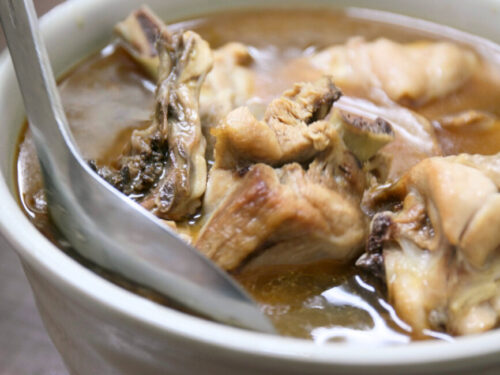
Common Ways to Remove Oil
It’s always great to have a number of tricks up your sleeve, especially when you’re dealing with different cooking scenarios. Whether you’re in a pinch or just prefer using tools and techniques you already have on hand, these methods for removing excess oil from stocks and sauces offer simplicity and efficiency. From age-old kitchen hacks to modern gadgets, let’s explore some of the easiest ways to get that clear, grease-free broth or sauce that can truly elevate your culinary creations.
- Ice Cube Trick: A quick way to remove excess fat is the ice cube trick. Simply glide a cold ice cube along the surface of the soup, and watch as fat sticks to it.
- Paper Towel or Napkin: Gently lay a paper towel or napkin on top of the liquid. The fat particles will adhere to it, making it easy to lift away the excess grease.
- Fat Separator: A fat separator, much like gravy strainers, can be a handy tool. Pour your stock or sauce into it, wait for the fat to rise, then pour out the lower fat-free liquid.
- Chilling Technique: If you’re not in a rush, chilling your stock or soup will cause the fat to solidify, making it easy to skim off.
Preventing Excess Fat: Tips and Techniques
Before reaching for that ice cube or paper towel, consider some proactive strategies during your cooking process to minimize fat right from the start. It’s not just about removing excess fat; it’s also about how you incorporate fat into your dishes. By understanding how to manage fat content more effectively, you can create healthier, more balanced meals. Here are some tips and techniques that can help you keep your dishes leaner from the beginning:
- Choose Leaner Cuts of Meat: Start by selecting relatively lean cuts of meat. If you’re working with fattier cuts, trim off as much excess fat as possible before cooking. This simple step can significantly reduce the amount of fat that ends up in your final dish.
- Opt for Healthier Cooking Methods: Grilling, broiling, roasting, and baking are excellent ways to cook meats while allowing excess fat to drip away. Unlike frying or sautéing, these methods help render out fat without adding additional oil.
- Cool and Skim: After cooking, let your stocks, soups, or stews cool. As they cool, the fat will rise to the top and solidify, making it easier to skim off. This technique is particularly useful for large batches of stock or slow-cooked dishes.
- Enhance Flavors with Aromatics and Herbs: Instead of relying on fat for flavor, use herbs, spices, and aromatics like garlic, onions, and citrus zests. These ingredients add a depth of flavor without contributing additional fat. A splash of acid, such as lemon juice or vinegar, can also brighten up your dish.
- Be Mindful with Fatty Ingredients: When using ingredients high in fat, like cream, cheese, or butter, practice portion control. A little goes a long way in terms of flavor. You can often achieve the desired richness and texture with much less than you might think.
By incorporating these techniques into your cooking routine, you can enjoy delicious meals that are healthier and less laden with unnecessary fats.
My Favorite Way to Remove Oil
Not all skimmers are created equal. Many, like those you’d find here or here, aren’t fine enough to capture those smaller droplets of fat. That’s why my go-to tool is this amazing Ultra Fine Mesh Skimmer – it’s a real game-changer and a life hack that every cook should have in their arsenal.”
This skimmer is perfect for small batches of stock or sauce where you’re dealing with a small amount of fat. The mesh is fine enough to catch even the tiniest fat droplets, leaving your dish taste-rich without the greasiness. It’s especially useful when dealing with relatively lean cuts of meat or poultry stock where you don’t have a thick layer of fat but still want a clean, neutral flavor.
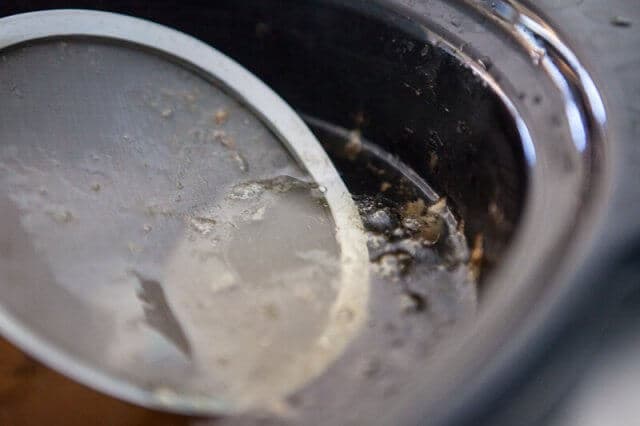
I make homemade chicken soup, and start with whole chicken, skin on. The skin means the soup will be more oily, but the skimmer does its job well:
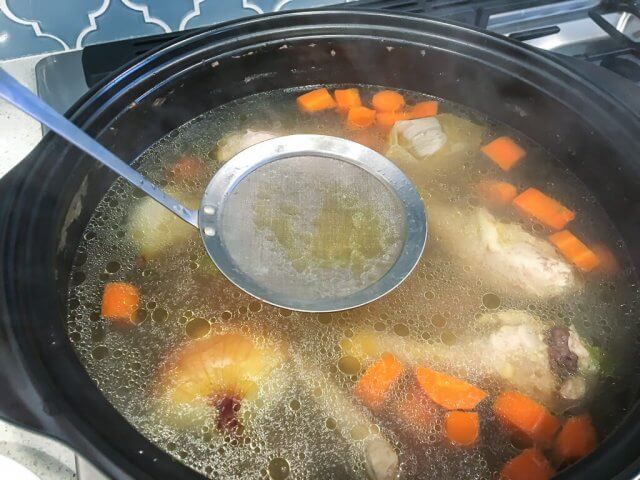
This is all oil!!
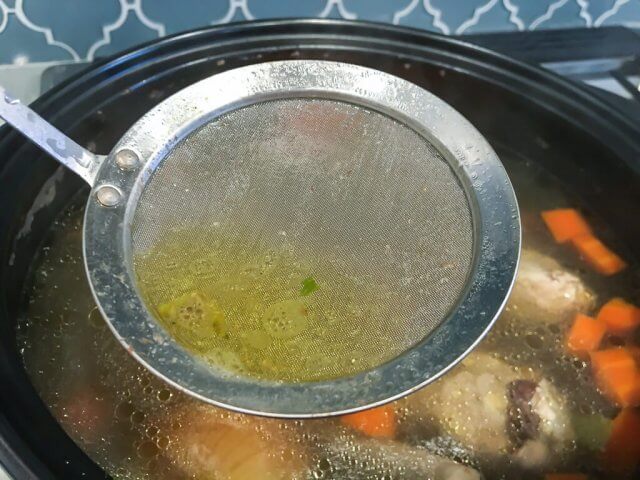
FAQs:
Q: Can I use a turkey baster to remove oil from my soup or stock?
A: Yes, a turkey baster works by sucking up the layer of fat from the top of the liquid. It’s particularly useful when dealing with a large amount of fat.
Q: Is it possible to use a slotted spoon to skim fat?
A: While a slotted spoon can remove larger pieces of fat, it’s not the best tool for skimming fat from the top of your soup or stock. For more effective skimming, a fine mesh skimmer or one of the other methods mentioned above is preferable.
Q: How effective are fat skimmers compared to homemade methods like using ice cubes or paper towels?
A: Fat skimmers, particularly fine mesh ones, are designed specifically for the task and can be more efficient, especially if you’re dealing with a lot of broth or a recipe that produces a lot of fat. Homemade methods can be effective but might require a little more effort or time.

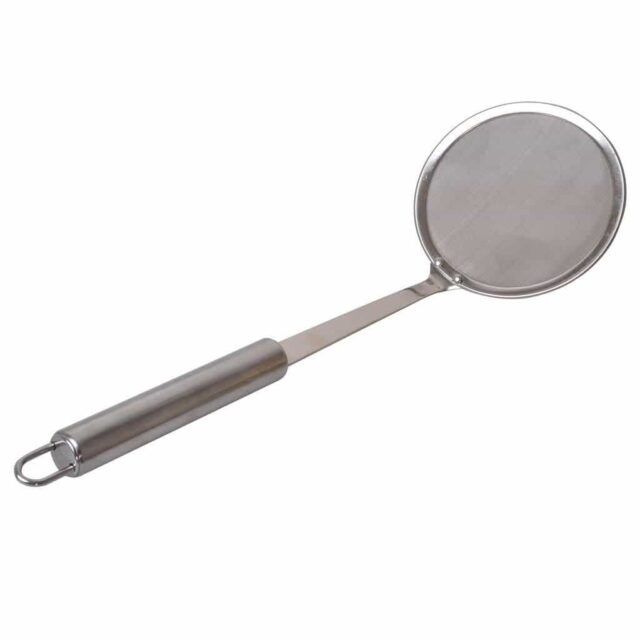

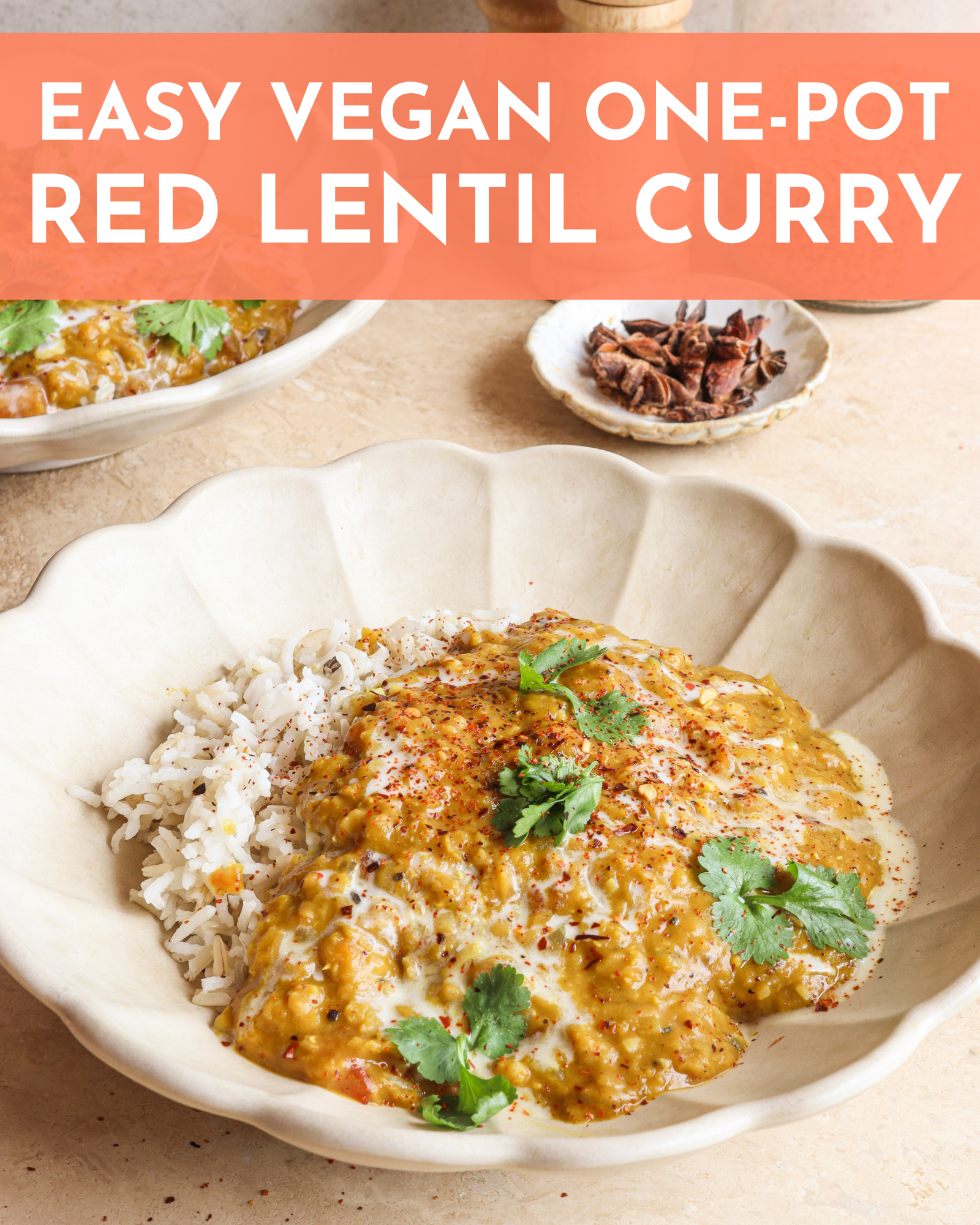
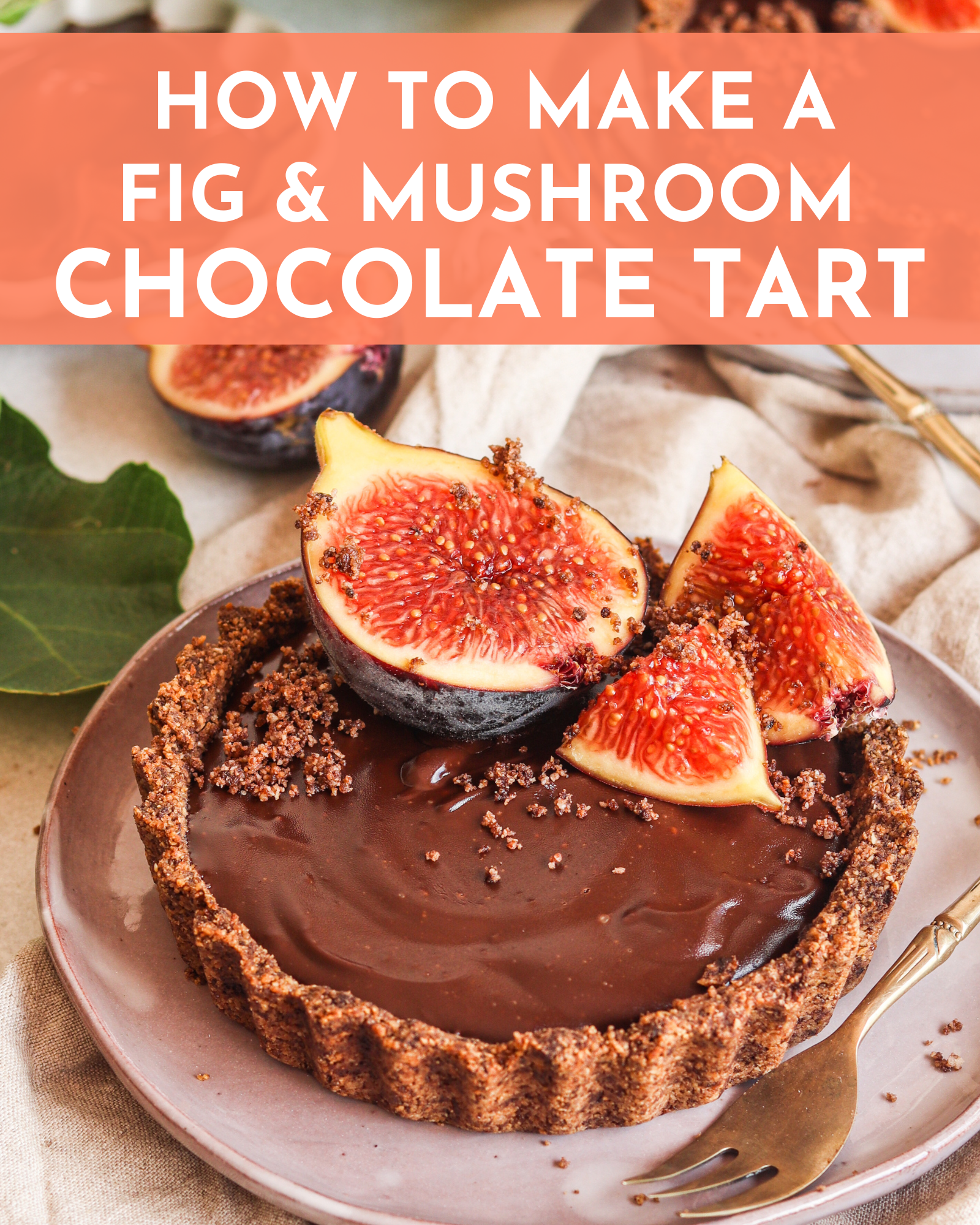
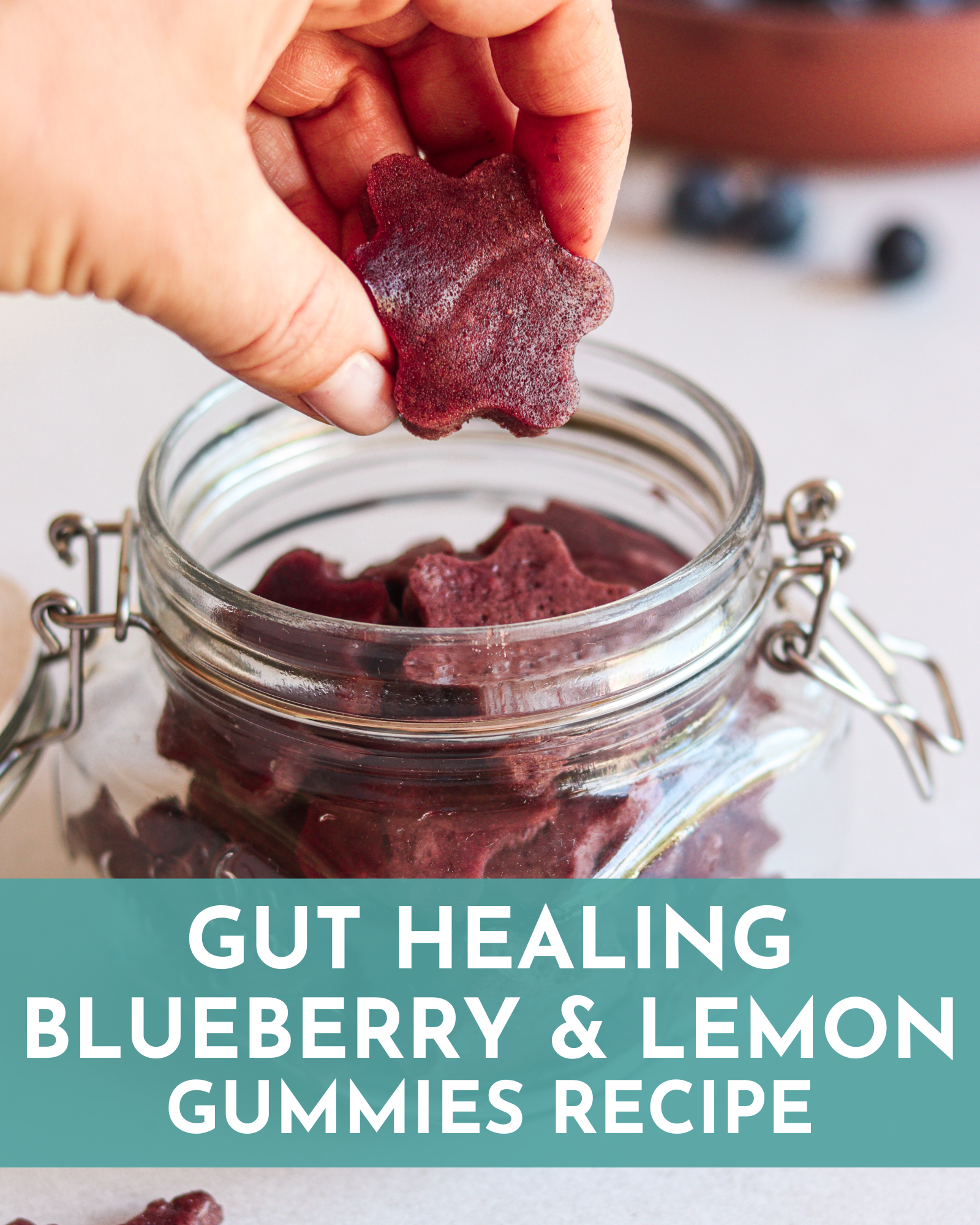
Just found this extremely informative. However my chicken tikka masala just came out of the oven, and it’s too oily. Trying to use something I have on hand now. What are your thoughts on using a fine reusable gold coffee filter for my old coffee maker? It looks about the same fineness of the holes. I’ll let you know.
Absolutely love your Pros and Cons posts.
I learned sooo much this morning!
And I’m always looking for awesome healthy recipes, especially family recipes. So, I’m gunna try my hand at a few of yours and your Mom’s recipes this week.
When I have time, I’ll let you know how things turned out.
Thanks Jaden…
Well the one you recommended is now currently unavailable. Do you think this one is just as good? https://www.amazon.com/MyLifeUNIT-Japanese-Skimmer-Stainless-Strainer/dp/B01CZZE4KY/ref=pd_sim_79_2/155-3551512-4887162?_encoding=UTF8&psc=1&refRID=GH2050RQH2XZ3H15GYXB
Perfect.
: )
Great items for any kitchen.